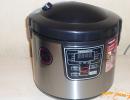10 exercises to help your baby learn to roll over
Every mother tremblingly tracks the baby’s first skills and abilities, the first smile, cooing, attempt to lie on his tummy and move around. The last event is especially exciting for parents; they are often interested in how to teach a child to roll over on his side, tummy, or back? Let's find out how to help your baby in this difficult task, what exercises are available and when you can start doing them.
When is it time?
Children always grow up unnoticed, it seems like just yesterday they brought a small bundle from the hospital, but today he is already smiling with all his might and reaching for a toy. At about 3 months, the baby no longer lies in place, he begins to move more and sometimes, groaning like an old man, rolls over on his side. Then gradually this new skill improves, and the baby is able to lie on his tummy independently. But the ability to roll over onto your back is mastered later than ever – towards the end of the 5th month of life.
It is worth noting that each child is individual. Temperamental children are usually more physically developed than their calm, phlegmatic peers. The weight of the baby also matters: if he is too big, then it will be more difficult for him to perform a coup. But the gender of the child does not matter; girls and boys master this skill approximately equally.
Many mothers worry if someone’s child has already learned to roll over, but she hasn’t. But you only need to worry if the baby is already 6 months old, and he has not even tried to lie on his tummy or side on his own. In such a situation, consultation with a specialist is necessary to exclude possible neurological disorders.

How can you help your baby?
To teach your child to roll over, it is not necessary to do special exercises. Just properly organize your daily routine and the space around your baby’s crib.
From about 1.5 months you can follow the following recommendations.
- Create a goal in the form of a bright toy that attracts the baby. It is best to use simple shapes, such as a red or blue ball or cube. It is important that the baby lies on a hard surface.
- Conduct exercises on fitball. Of course, it is better if a specialist is present. However, mother and baby can perform some exercises independently, such as rocking.
- Do a restorative massage. This procedure not only helps to strengthen the muscles of the baby, but also relieves the increased tone that is present in almost all babies in the first months of life. You should alternately stroke the baby’s legs, arms, tummy and back, moving from the periphery to the center. You should not massage places such as knees and elbows. As the child grows, you can add light patting with your fingertips, kneading, and vibration.
- Learn to swim. Water procedures promote the development of the vestibular apparatus, stimulate the immune system, strengthen muscles and, moreover, are very popular with all little children. The duration of swimming should be increased gradually, starting from 3-4 minutes and ending with 15-20.
- Temper the baby. The main thing here is not to overdo it. Swimming in cool water, sun, air baths and other procedures should be short in time, and the child should have a positive attitude.

A set of special exercises
Gymnastics for a baby is very useful; even the simplest exercises will help reduce colic, improve the functioning of the small intestines and improve motor skills. It is best if physical education classes are carried out in the morning after a massage, 30 minutes before meals or 1 hour after. For a tiny one-month-old baby, exercises such as “bicycle” and laying on the tummy are suitable. You can also give your baby your thumbs to grasp, and then slowly spread his arms to the sides and cross them over his chest. But it is recommended to do more serious gymnastics no earlier than the baby reaches three months of age.

Learning to roll from back to stomach
So, with the help of a massage, you have warmed up the baby’s muscles, and now he is ready for gymnastics.
- Place your thumbs in your baby's hands and clasp your wrists with the rest. Extend and bend your arms on your chest 5-6 times, lift them up above your head and pull them down perpendicular to your body.
- Then start boxing. The child lies on his back, the grip of the hands is the same. One by one, throw the baby's arms forward and then release. When extending your arm, try to ensure that the child's shoulder is slightly raised. Perform 4-5 times.
- Now we perform exercises to strengthen the leg muscles. Take your baby's feet in your hands and lightly press on the base of the toes from the sole. The foot will reflexively bend, after which you need to lightly rub the outer edge of the foot, and it will immediately straighten. Perform 5-6 times.
- Place your baby's stomach on a hard surface, then stand behind him and place your hands on your baby's feet. He should push off and crawl forward a little. 2-3 repetitions of the exercise are quite enough.
- After this, place the baby on his back. Holding the baby's straight legs with your right hand, place the thumb of your left hand in his palm and slightly pull him towards you. When the child turns over on his side, try to hold him in this position for a while. If he can't lie on his stomach, help him by stretching his left arm forward. Perform 2 flips in each direction.
- The starting position is the same. Place your fingers in your baby's hands to grasp, and then slowly pull towards you. Then, when he lifts his torso, carefully lay him back. This exercise will help strengthen the abdominal muscles and at the same time enable the baby to see the world around him in a new way. Repeat 4 times.
- Now use a bright toy. When the baby reaches for it, move your hand to the left side, while simultaneously pushing his pelvis in the same direction. For that. To make the baby finally roll over, straighten his right arm. Perform the exercise 2 times in each direction. Make sure that when lying on your stomach, the baby’s palms are open and directly under the chest.
If the baby is not in a good mood, cries and is capricious during exercises, then it is better to reschedule classes for another time. Nervous tension and hypertonicity that occurs when crying will not do him any good.

Learning to roll from stomach to back
At about 4-4.5 months, gymnastics can be supplemented with new exercises that will help teach the child to roll over from his stomach to his back. They should be performed last, when all the muscles of the baby are already well warmed up.
- Place your baby tummy down and stand behind you. Gently lift it up, making a grab under the chest. The exercise should be done slowly, so that the child himself pushes off the surface with his hands. From the outside it looks like push-ups. Repeat 5-6 times.
- The position of the child is the same - he lies on his stomach. In order for him to roll over, bend his left leg at the knee and move it behind the right. After some time, the baby will try to make a coup. When he lies on his side, hold him in this position for a while. Repeat the exercise in the opposite direction, moving your right leg behind your left.
- Take out a bright toy and wait until the baby reaches for it. If the child extends his left hand, then slowly move the toy over the child to the right. Make sure that the baby first rolls over on his side and does not suddenly fall on his back. Repeat the exercise several times, preferably with flips in different directions.
Most pediatricians, including Dr. Komarovsky, recommend not focusing on gymnastics for babies unless there are specific indications for it. It is enough for the child to give a soothing massage a couple of times a day, bathe him and play with him.
Teaching a child to roll over is not at all difficult; the main thing is to regularly pay attention to his physical development. Before you even have time to blink an eye, your baby will be able to independently turn from back to tummy and back. From now on, you will need to think about its safety. Do not leave your child unattended, even for a minute, or use a playpen and cover it with pillows so that the “nimble child” does not fall out of the bed or sofa.






